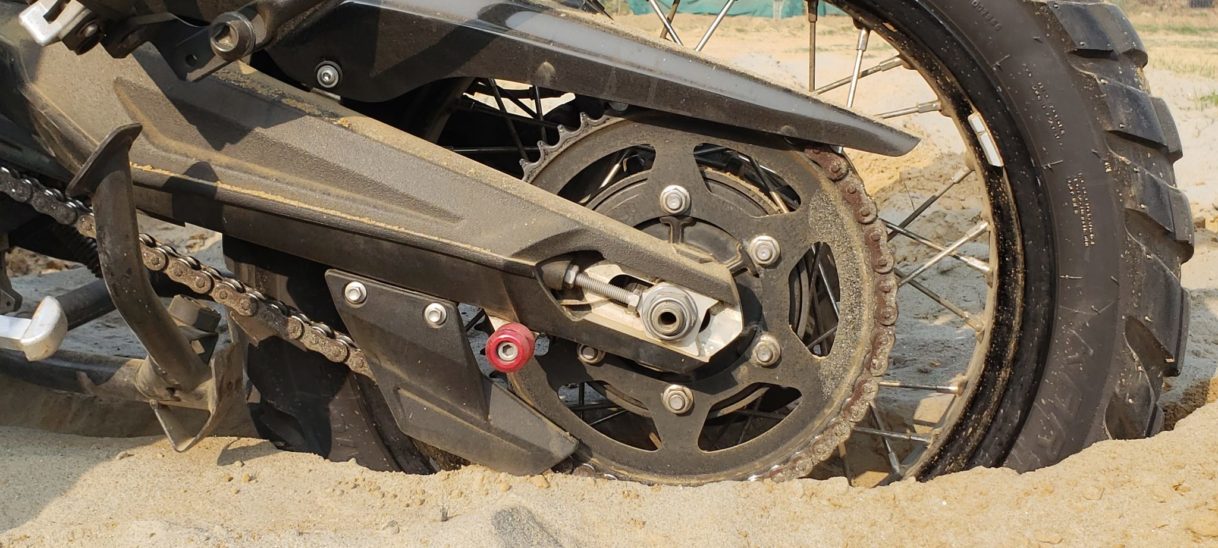Scenario
“Suddenly, my rear wheel began a slight fishtail in the loose gravel road and I calmly increased the throttle in response. Past experiences had always quickly straightened out, but today the oscillations rapidly moved to the handlebars.
Committed to the acceleration strategy, the handlebars violently shook back and forth and I continued to roll on the throttle…”
Many “experienced” riders offer one tip for riding in loose surface conditions: “Add more throttle”.
I can assure you that you were victim to the ‘helpful’ tips of partial myths and half-truths perpetuated by the riding community.
The half-truth is… adding throttle can be true within two specific elements:
1. Adding throttle can lighten the front end of the motorcycle, allowing the front wheel to climb out of the soft stuff and get on top.
2. Adding throttle increases speed and gyroscopic progression that, in turn, increases self-corrective forces along with rake and trail.
The issue with adding throttle as a single response doesn’t take into considerations the specifics of your situation. For the sake of simplicity, I will identify three of the most significant considerations:
The ‘add throttle’ mantra comes from the dirt bike world, where bikes are much lighter and have a greater self-correcting nature.
While traveling, you are likely on a heavy bike, which may have loading issues (weight distribution) and cannot climb out of deep sand or gravel as easily.
DOT knobbies and ADV tires have far less traction off-road than true dirt bike tires do. Many dual sport tires are not much more than glorified street tires with little deep tread.
The element of momentum and getting the front tire on top of the surface is correct; what was lacking was the knowledge of how to do this without adding speed.
The following are some tips when you find yourself in deep gravel or sand:
1. Ride in a standing position. While standing, you can shift a greater amount of weight to the rear of the motorcycle. This helps lighten the front end and also adds traction to the rear for greater drive.
2. Lighten your grip. If you are using a proper standing technique, you will barely be touching the handlebars. This allows the rake and trail work properly to self-correct more quickly.
3. Maintain throttle. Closing or ‘chopping’ the throttle may cause an instant encounter of the dirt kind!
4. Trim the overall speed by massaging the clutch. You must keep tension in the drive train, so keep the clutch in the gray zone, or friction zone.
5. Lightly drag the rear brake. You can further reduce speed and encourage front wheel lift with a very light drag of the rear brake. A hard jab to the rear brake will cause a rapid transfer of weight to the front tire and will make things worse.
6. Avoid wheel spin. This can cause the rear wheel to dig deeper into the sand or gravel, reducing forward thrust and the front tire will plow in.
7. Let the front wheel move like a rudder. Know that steering responses in loose surfaces is delayed, and the rider must be patient and let the bike catch up to any directional inputs. Riders often expect the bike to respond more quickly and add more steering input.
Although there may be many situations where adding throttle will work, not understanding the full dynamics of the situation may cause things to go badly very quickly.
